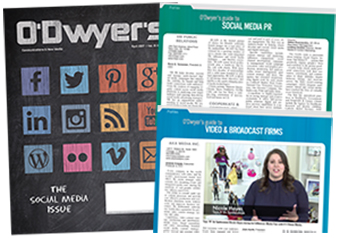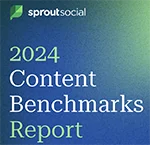|
|
The year was 2007, and it was also the year I got my start in PR. I didn’t know it at the time — most in the profession didn’t — but the industry was teetering on the edge of transformation.
Social media has had such a significant impact on brand communications that it’s difficult to imagine the industry without it. And do we really want to? It’s been an enlightening and entertaining — and sometimes, downright terrifying — experience. We’ve seen social media make or break brands and agencies alike, but it was a risk we were all willing to take.
|
|
Now that we have a decade under our belts, it’s time to reflect on the past and leverage what we’ve learned to improve and prepare for the future.
In the beginning
Did you know LinkedIn was the first major heavy hitter? It was founded in 2002 as a way for professionals to share the contents of their Rolodex with other professionals. We all know how Facebook got its start; it was created as a network for Harvard students to connect. There’s a pattern here. Social networks weren’t created with brands in mind but, rather, people. Where the people go, brands will follow.
Social media presented an opportunity for brands that was so obvious, so effortless, that communications professionals were dumbfounded when a brand passed it up. A lot of them did in the beginning; they thought it was a passing phase. No way to determine ROI? Then, no way. When years went by and other players began entering the arena — YouTube, Twitter, Instagram, Pinterest, Snapchat — social media became a must-have for brands. The benefits and challenges that came with social media were unimaginable at the time but were also quickly realized.
Key takeaways from 10 years
Like I said, social networks were created to connect people. When brands stepped in, they were given the same superpower (because that’s what it was). The ability to directly connect with a key audience on a channel of said audience’s choice was and will always be the social networks’ greatest benefit.
More traditional means of communication — such as media relations and press releases, which are still very relevant and necessary today — don’t afford brands the ability to drop the marketing jargon, say it like it is to buyers and get a direct response within seconds. At a time when third-party validation was the main driver of changing perceptions, this new approach was huge. It was the embodiment of communications.
Needless to say, there was a lot of “talking” going on. Brands not only leveraged social networks to engage with buyers, they began weaving social media into marketing plans. However, they took a production line approach to it. Content was produced and pushed out in record time, so much so, that content became overwhelming.
We realized this when social networks began to change their algorithms. They had to if they wanted users to see information that was pertinent to them. This has been a real challenge for brands, as it requires a shift from a “content in mass quantities” to “less is more” approach. But when you produce less content, you really need to hone in on the content that matters most to buyers. How do brands know what matters most?
Enter big data. More users, more engagement and more content meant more data. Social analytics tools began popping up left and right to aggregate and evaluate trillions of online conversations. What did this mean for brands? They were handed the keys to unlock buyer interest. Leveraging data, brands could create not only content that spoke to key interests, but metrics-driven social programs. Data brought with it another revelation, though: sentiment. Brands had deeper insight into how buyers felt about them.
The importance of brand transparency and buyer’s trust has been magnified with social media. More than two billion smartphone users now have a wealth of information at their fingertips. Within seconds they can seek Siri on a brand, do a little research and determine whether or not they trust the brand enough to do business with them. This is really where that “make or break” reality comes into play. Brands need to be on top of their game when it comes to building a transparent and trustworthy brand online. Tell your story in a genuine fashion and back it up through business practices; otherwise, you’ll get the virtual equivalent of a glitter bomb.
So that’s where we are. The ride has been a wild one, but the roller coaster car we’ve been on is now ascending the largest hill yet.
Stepping into a new reality
Last month marked SXSW’s 30th year. Since 1987, it’s become one of the largest interactive media conferences of all time. This year’s conference is important to note, though, because the main topic of conversation plays directly into the next decade for social media.
User experience is vital for social networks. Fail to keep up with it and you fail. Period. Just look at SixDegrees, MySpace and others. With the influx of content, the need to differentiate it increases. That’s why visual storytelling has been on the rise over the past few years. This approach will be getting a serious facelift in the next few years, though. Stories will come to a face near you thanks to virtual reality, and augmenting that is augmented reality. The technology is there, but social networks are still in the very early stages of figuring out how to incorporate it into the user experience. The same could be said with brands and communications.
Right now, they’re taking baby steps with 360-degree photos and videos. I predict within the next 10 years that social networks will begin enabling VR experiences. In turn, brands will begin creating content that completely immerses buyers in a unique and interactive experience, enabling them to get a taste of products and services before actually making a purchase. And the shopping cart? It’s part of the experience.
Imagine slipping on a VR headset to scroll through your news feed. A post from your favorite fashion brand pops up. You click on it, and you’re immediately pulled onto a runway. You look down, and you’re wearing next season’s line. A shopping cart pops up to your right and you can easily swipe items into your cart before checking out. What if you have questions about sizing? A customer service rep is on standby in the crowd surrounding the runway. It may sound like an episode of “Black Mirror,” but wouldn’t that be nice? It could be the future of social media, and if it is, we need to start planning for it now.
***
Rory Schaff is online services supervisor at McGrath/Power Public Relations.

 Rory Schaff
Rory Schaff

 What if companies could harness the fury of online outrage into a force for good? This is precisely where companies can start turning the trolls into brand champions.
What if companies could harness the fury of online outrage into a force for good? This is precisely where companies can start turning the trolls into brand champions. Audiences interacted with brand content far more often on Facebook and Instagram in 2023 than they did via X (formerly Twitter), according to a report that tracked engagement trends across different social networks.
Audiences interacted with brand content far more often on Facebook and Instagram in 2023 than they did via X (formerly Twitter), according to a report that tracked engagement trends across different social networks. Can public relations help counteract the dissension fostered by the power of digital platforms to spread hate, fear and confusion?
Can public relations help counteract the dissension fostered by the power of digital platforms to spread hate, fear and confusion? The number of Americans who get their news from TikTok has quadrupled in the last three years, according to a recent Pew Research Center report.
The number of Americans who get their news from TikTok has quadrupled in the last three years, according to a recent Pew Research Center report.


 Have a comment? Send it to
Have a comment? Send it to 
No comments have been submitted for this story yet.